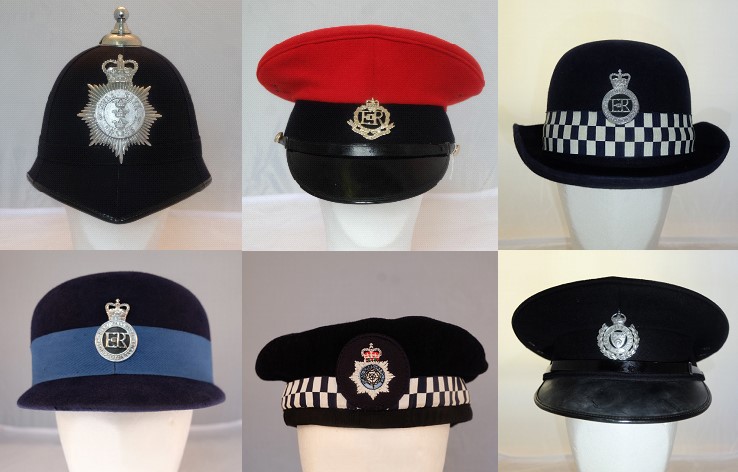Development of police hats
We’ve been working on a project to clean, photograph, document and re-pack our collection of hats and helmets. We have over 220 helmets, hats and caps in the collection, mostly relating to police forces in Yorkshire and the Humberside. Research Volunteer Emily Ward has been investigating the history of headgear in the police.
The police hat became an essential, and recognisable, part of police uniform in 1829 when Robert Peel created the first police force in Britain. Referred to as a ‘stovepipe’ hat, this tall and heavy headgear, complete with a leather top resembling a top hat, was a popular choice for Victorian, aristocratic men. The Metropolitan police in London developed a top hat that was reinforced by cane, which could also be used as a step while on patrol!
However, it soon became clear that the stovepipe hat was not a practical choice for police officers on the beat, who were often required to chase down petty thieves. The requirement to wear the hat in all seasons also meant it quickly became uncomfortable to wear. An alteration around 1844 saw small holes being created in the tops of the hats to act as ventilation and help keep the officers cool.
A major change was planned and trialled in 1863 when a new helmet was designed. The ‘custodian helmet’, which became official in 1865, can still be seen today in some police forces and is the hat most recognisable as a police helmet. The design of the custodian helmet came from similar successful designs in the military, with some saying it was inspired by the Pickehaube helmet that was worn by the Prussian Army. The original construction of the custodian helmet was made of cork, which led to the nickname sometimes given to police officers of ‘woodentops’.
Custodian helmets have not changed dramatically in style since the late 1800s. Badges were worn on the front, which held the officer’s personal number and the divisional letter of their force, helping to identify which geographical area they were based in. The badge was also topped with the crest of the reigning monarch at the time.
Variations to the Custodian Helmets include the ‘comb style’, which features a large ventilation area at the top of the helmet; the ‘rose top’, which uses a metal rose to cover the ventilation hole at the top; the ‘ball top’ and the now phased out ‘spike top’.
The Home Office attempted to standardise the design of the helmets in the 1930s, as many county and borough forces were following the Metropolitan Police by using their own designs of ‘helmet furniture’ (the name given to the decorative and functional features on a helmet) and sometimes county crests. Forces favoured different helmet furniture including ‘Night Plates’, which were darker coloured badges developed as a way to conceal the presence of an officer at night time.
The first women employed by the police were called ‘Matrons’ and they would primarily look after any women or children that were brought into custody in the late 1800s. After World War I, many women started careers in a wide range of jobs, including the police. Female officers, to this day, wear a different helmet to their male colleagues, usually a ‘bowler hat’, which features the same badges as their male colleagues but does not feature furniture such as the rose or comb top. The bowler hat has not changed much in design over the past 80 years.
More recently, many forces have been experimenting with the design of the police hat to accommodate the modern police officer’s duties. A unisex reinforced baseball cap, or ‘bump cap’ has been tried in many forces including Lancashire, Cheshire and Northamptonshire and an increasing number of forces around the UK are favouring the ‘peaked cap’, which is more lightweight and practical. The custodian helmet is still used in ceremonies.
 Prison & Police Museum
Prison & Police Museum